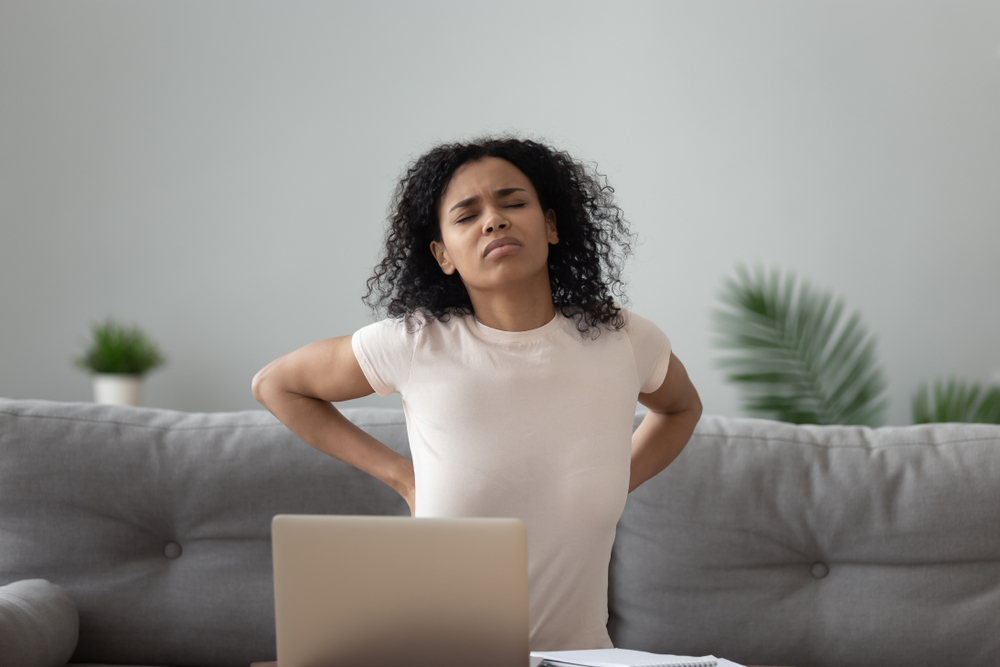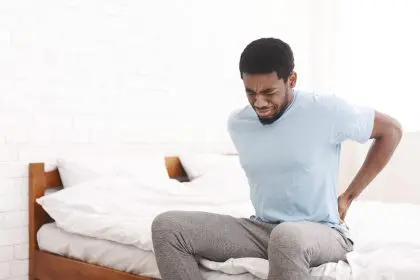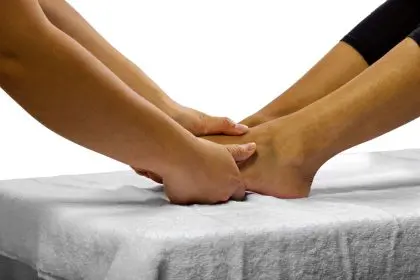Lower back pain ranks among the most common health complaints worldwide, affecting people of all ages and activity levels. Whether you’re experiencing a dull, persistent ache or sharp, sudden twinges, dealing with lower back discomfort can significantly impact your quality of life. The good news is that many cases of lower back pain can be effectively managed and even prevented with the right approach. Understanding the causes behind your discomfort is the first step toward finding relief and implementing strategies to keep pain from returning.
Understanding the source of your discomfort
Before exploring solutions, it helps to understand why lower back pain occurs in the first place. The lower back, or lumbar region, supports much of your upper body weight while enabling movement in multiple directions. This complex structure of vertebrae, discs, muscles, ligaments, and nerves works together seamlessly when healthy, but can become a source of pain when any component is strained or injured.
Common causes include muscle or ligament strain from heavy lifting or sudden movements, disc issues such as herniation or degeneration, arthritis, skeletal irregularities, and osteoporosis. Lifestyle factors significantly contribute as well—poor posture, excess weight, sedentary behavior, and workplace ergonomics all play roles in developing or exacerbating lower back problems.
Understanding your specific pain triggers creates a foundation for effective treatment and prevention. While some causes require medical intervention, many cases respond well to self-care strategies that address both immediate relief and long-term prevention.
Immediate relief techniques for acute pain
When lower back pain strikes suddenly, several approaches can provide quick relief. Start with modified rest—not complete inactivity, but rather avoiding activities that worsen pain while continuing gentle movement. Complete bed rest can actually delay recovery by weakening muscles and stiffening joints.
Cold therapy works well in the first 48 hours after pain begins. Apply an ice pack wrapped in a thin cloth to the painful area for 15-20 minutes several times daily. This helps reduce inflammation and numb the area. After the initial inflammatory period, switch to heat therapy with a heating pad or warm bath to relax tight muscles and increase blood flow to the area.
Over-the-counter pain relievers can provide temporary relief. Non-steroidal anti-inflammatory drugs (NSAIDs) like ibuprofen address both pain and inflammation, while acetaminophen targets pain without reducing inflammation. Always follow package directions and consult a healthcare provider about potential interactions with other medications.
Gentle stretches can release tension in tight muscles contributing to pain. The knee-to-chest stretch, performed by lying on your back and gently pulling one knee toward your chest, can provide immediate relief for many people. Hold for 30 seconds, release, and alternate legs. Similarly, the gentle spinal twist involves lying on your back, knees bent, and slowly lowering your knees to one side while keeping shoulders flat. These movements should be performed slowly and only to the point of mild tension, never pain.
Posture adjustments that make a difference
Poor posture places excessive stress on your spine, contributing significantly to lower back pain. Making conscious adjustments to how you sit, stand, and move can dramatically reduce strain on your lower back.
When sitting, choose chairs with good lumbar support and position yourself with feet flat on the floor, knees at hip level or slightly higher. Avoid crossing your legs, which can tilt your pelvis and strain your lower back. If you work at a desk, position your computer monitor at eye level and keep frequently used items within easy reach to avoid twisting. Set a timer to remind yourself to stand up, stretch, and walk briefly every 30 minutes.
Standing posture matters equally. Maintain a neutral spine position by standing with feet shoulder-width apart, knees slightly bent rather than locked, and weight balanced evenly between both feet. Imagine a string pulling the top of your head toward the ceiling, elongating your spine. When standing for prolonged periods, periodically shift your weight from one foot to the other or place one foot on a low stool to reduce lower back strain.
Sleeping position significantly impacts back health. The ideal position for most people with lower back pain is on their side with knees slightly bent, with a pillow between the knees to maintain proper hip alignment. If you prefer sleeping on your back, place a pillow under your knees to maintain the natural curve of your spine. Stomach sleeping generally places the most strain on the lower back and should be avoided if possible.
The core connection: strengthening key muscles
A strong core provides crucial support for your lower back. Despite common misconceptions, your core includes more than just abdominal muscles—it encompasses the entire set of muscles around your trunk, including those in your back, sides, pelvis, and hips. Together, these muscles form a natural support system for your spine.
Begin core strengthening with gentle exercises like pelvic tilts. Lie on your back with knees bent and feet flat on the floor. Tighten your abdominal muscles while pressing your lower back into the floor, then release. Start with 10 repetitions and gradually increase as strength improves.
The bird-dog exercise effectively engages both core and back muscles. Start on your hands and knees, then simultaneously extend your right arm forward and left leg backward while maintaining a flat back. Hold for five seconds before returning to the starting position, then alternate sides. Focus on keeping your core engaged throughout the movement.
Bridges strengthen the lower back, buttocks, and hamstrings. Lie on your back with knees bent and feet flat on the floor. Tighten your abdominal and buttock muscles, then lift your hips to create a straight line from shoulders to knees. Hold for several seconds before lowering slowly back down.
These exercises should be performed with proper form and without pain. Start with a few repetitions of each and gradually increase as your strength improves. Consistency matters more than intensity, especially when beginning a strengthening program.
Flexibility: the often overlooked factor
While strengthening provides stability, flexibility ensures proper range of motion and reduces tension in muscles supporting the spine. Tight hamstrings, hip flexors, and lower back muscles frequently contribute to lower back discomfort.
Develop a regular stretching routine targeting these key areas. For hamstrings, sit on the floor with one leg extended and the other bent with the foot against your inner thigh. Reach toward the extended foot until you feel a gentle stretch in the back of your leg. Hold for 30 seconds without bouncing.
For hip flexors, kneel on one knee with the other foot planted in front of you. Gently push your hips forward while keeping your torso upright until you feel a stretch in the front of your hip on the kneeling side. Hold for 30 seconds each side.
The cat-cow yoga movement improves spine flexibility. Start on hands and knees, then alternate between arching your back upward (cat) and letting it sag while lifting your head (cow). Move slowly between positions, focusing on the sensation of each vertebra moving.
Perform these stretches daily, ideally after a brief warmup when muscles are already slightly warm. Morning stretching can relieve overnight stiffness, while evening stretching helps release tension accumulated throughout the day.
Movement as medicine: staying active wisely
Regular physical activity maintains spine health, but choosing appropriate activities makes all the difference. Low-impact exercises provide cardiovascular benefits without jarring the spine. Swimming offers an ideal environment where buoyancy reduces the effects of gravity while allowing full range of motion. Water’s resistance provides gentle strengthening benefits while its warmth can soothe tight muscles.
Walking represents perhaps the most accessible form of spine-friendly exercise. Start with short distances on level terrain and gradually increase duration and intensity. Focus on maintaining good posture with shoulders relaxed and head aligned over your spine rather than jutting forward.
Cycling on a properly fitted bicycle or stationary bike provides excellent cardiovascular exercise with minimal spinal impact. Ensure the bike is adjusted appropriately—handlebars should be high enough that you don’t need to hunch forward, placing strain on your lower back.
Yoga and Pilates, when practiced with proper form and modifications for your condition, can significantly improve both core strength and flexibility. Look for classes specifically designed for back health or work with an instructor who can provide appropriate modifications for your condition.
Whatever activity you choose, begin gradually and increase intensity slowly. Sudden increases in activity level often trigger back pain episodes, even with otherwise appropriate exercises.
Lifestyle adjustments for long-term relief
Beyond specific exercises and posture changes, several lifestyle modifications can dramatically improve back health. Weight management plays a crucial role, as excess weight—particularly around the midsection—alters your center of gravity and increases strain on lower back muscles. Even modest weight loss can significantly reduce back pain symptoms.
Nutrition influences back health more than many realize. An anti-inflammatory diet rich in colorful fruits and vegetables, healthy fats, and whole grains can help reduce inflammation throughout the body, potentially decreasing pain. Foods containing omega-3 fatty acids (such as fatty fish, walnuts, and flaxseeds) show particular promise for reducing inflammatory pain.
Stress management directly impacts muscle tension. High stress levels lead to chronically tight muscles, particularly in the back. Incorporate stress-reduction techniques such as deep breathing, meditation, or progressive muscle relaxation into your daily routine. Even five minutes of deep breathing can noticeably reduce muscle tension.
Adequate hydration maintains the health of intervertebral discs, which rely on water to maintain height and cushioning properties. Aim to drink water consistently throughout the day rather than large amounts all at once.
Quality sleep in proper positions allows your back to recover from daily stresses. Invest in a supportive mattress that accommodates the natural curves of your spine without creating pressure points. Most people find medium-firm mattresses provide the best combination of support and comfort for back health.
Ergonomic enhancements at work and home
The environments where you spend most time significantly impact your back health. At work, ensure your chair provides proper lumbar support and allows your feet to rest flat on the floor with knees at approximately hip level. The top of your computer monitor should align with your eye level to prevent forward head posture that strains the entire spine.
If you work at a desk, consider a standing desk option that allows you to alternate between sitting and standing throughout the day. When using a standing desk, place one foot on a small stool and alternate periodically to reduce lower back strain.
For tasks requiring lifting, use proper technique: keep objects close to your body, bend at the knees rather than the waist, avoid twisting while lifting, and get help with heavy items. Plan ahead to break larger tasks into smaller components that don’t overtax your back.
At home, organize frequently used items to avoid unnecessary reaching, bending, or twisting. In the kitchen, keep commonly used cookware and ingredients between waist and shoulder height. For housework like vacuuming, focus on using your legs rather than bending from the waist, and take regular breaks rather than completing all chores in one session.
When to seek professional help
While self-care strategies effectively manage many cases of lower back pain, certain situations warrant professional medical attention. Seek immediate care if back pain follows a fall or injury, or if it accompanies other symptoms like fever, unexplained weight loss, or loss of bladder or bowel control.
Contact a healthcare provider if your pain is severe and doesn’t improve with rest, extends down one or both legs (especially below the knee), causes weakness or numbness in the legs, or persists beyond a few weeks despite self-care measures.
When seeking professional help, consider starting with your primary care physician, who can provide initial evaluation and referrals if needed. Physical therapists specialize in movement and exercise interventions, chiropractors focus on spinal alignment, and orthopedic specialists or neurosurgeons manage cases requiring more intensive medical intervention.
Many professionals now approach back pain with an integrative perspective, combining conventional medical approaches with complementary therapies like massage, acupuncture, or mindfulness-based stress reduction. This multifaceted approach often provides more comprehensive relief than any single therapy alone.
By implementing these proven strategies for both immediate relief and long-term prevention, most people can significantly reduce their experience of lower back pain and improve overall quality of life. Remember that consistency with gentle, appropriate interventions typically yields better results than aggressive approaches that may initially feel productive but ultimately create additional strain. With patience and persistence, you can develop habits that support a healthier, stronger back for years to come.
















